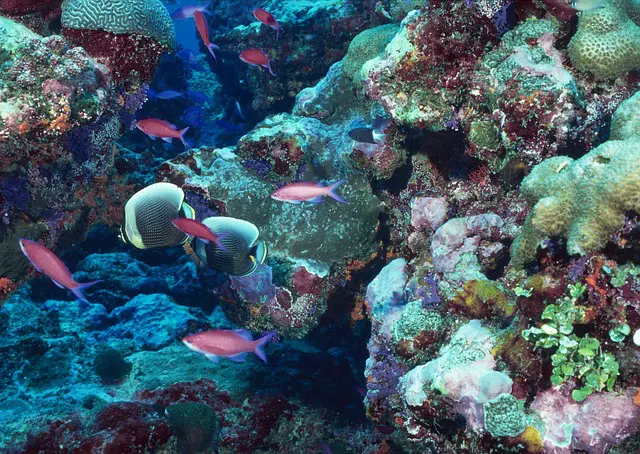Warming climate change -temperatures are causing a certain pheromone used by some animals and ant species to decay, making it harder to follow trails.
Coral reefs are losing their ability to learn who their predators are as CO2 levels rise in the water. And water fleas are finding it harder to evade predators.
Climate change affecting the chemical communications among animals
Climate change is also changing chemical communication among marine, freshwater, and land-based species, animals with far-reaching implications for the future of our planet and the wellbeing of mankind.
This “language of life” regulates interactions between organisms and is therefore essential to the environment, and ultimately to all life on Earth as a whole.
Probably the oldest and most widespread form of communication on earth is interaction through “infochemicals.” By acting as cues or signals on the surface of organisms or released into the surrounding environment, infochemicals contribute to the vast majority of ecological processes across the tree of life, on both land and water.
In addition to shaping natural ecosystems, they support the provision of many things of great importance to humans, such as food and clean water, by maintaining their equilibrium.
Predator-prey relationships are influenced by infochemicals in a wide range of ways.
Any chemical you can smell is likely an infochemical, often intended for a different species. Sharks, for instance, use these chemicals to “sniff out” their prey over long distances.
Pine forests, for instance, smell differently to humans, bears, and ants depending on the presence of certain chemicals.
Foraging and feeding are also affected by these chemicals. For example, infochemicals are released by some plant species to attract pollinators, while repelling those that could harm them. Plants that are under attack may even warn their neighbours of impending doom so they can act accordingly.
In addition to helping barnacle larvae pick a suitable surface for attachment, infochemicals are also used by species to identify potential mates and increase reproduction. Some bat species, for instance, can identify a mate with the greatest genetic diversity by sniffing out its presence.
Info-chemicals are changing
It is known, however, that climate change is altering the production of these information-carrying chemicals, such as pheromones, which are affecting a wide range of species adversely. Climate change can affect every aspect of the fundamental processes organisms use to communicate with one another – such as temperature, carbon dioxide, and pH levels.
A laboratory experiment showed that climate change decreased fish anxiety towards potential predators, leading to a reduction in anti-predator behavior.
The presence of certain chemicals in fish, detected through smell, serves as a warning for their fellow fish when they are harmed by predators or in danger. The most commonly studied alarm cue (hypoxanthine-3-N-oxide) is irreversibly altered when CO2 is absorbed into the water and the pH level is reduced, making it more difficult for fish to detect.
There is increasing evidence that climate change-associated stressors that change these chemical interactions are causing info-disruption across whole ecosystems.
As a next step, colleagues and I are exploring how climate change may affect the chemically mediated relationship (or communication) between disease-causing pathogens and their hosts.
We ultimately want to know how global warming will impact us humans if communication breaks down.
Also Read:
- The Bitter Truth: How Climate Change threatening the Global Tea Industry
- A new discovery by Scientists say that cold-blooded animals may extinct due to climate change
- What Are the 3 Biggest Contributors to Climate Change?
- World Fund to Invest $128 Million in Game Changing “Quantum” Technology Anticipating Climate Change
- COP26 and the commitment pledges towards Climate Change

1 Comment